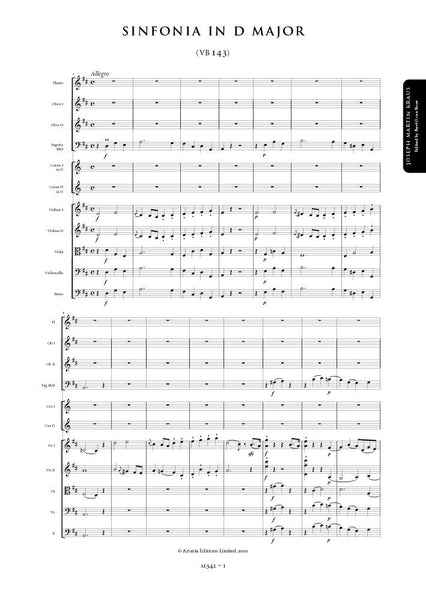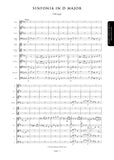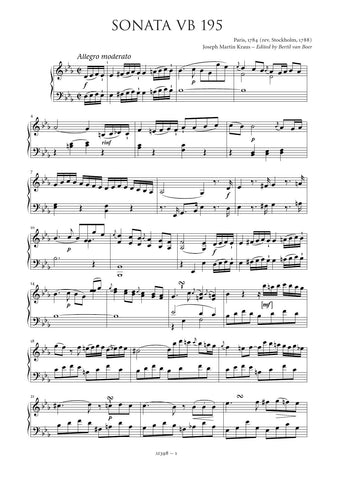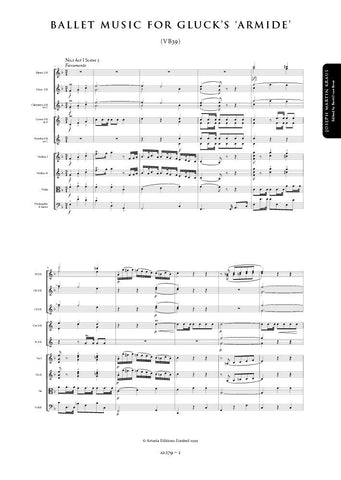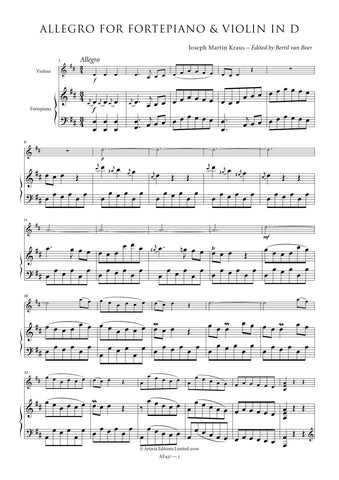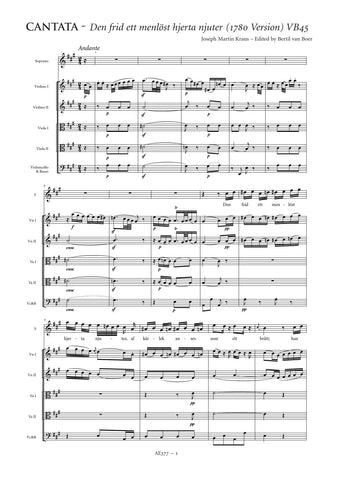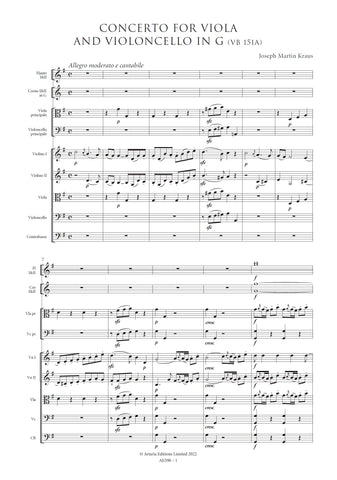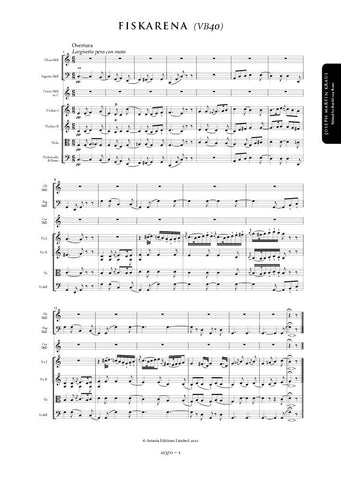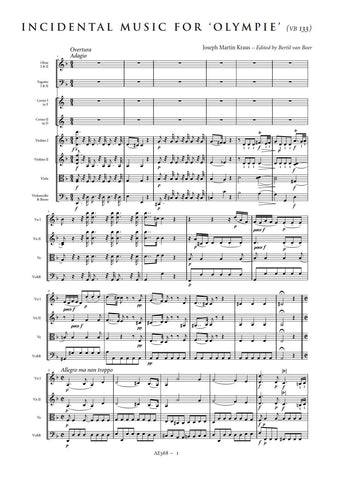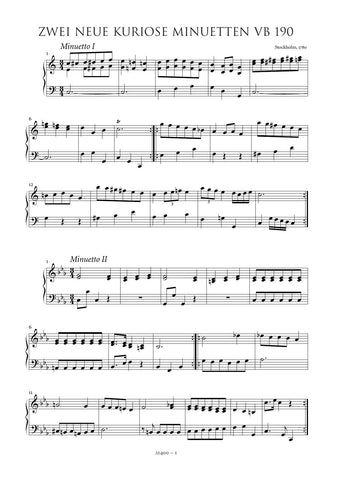Kraus, Joseph Martin: Sinfonia in D major (VB 143) (AE342) – sheet music
Previous Product Next Product
Description |
Kraus, Joseph Martin (1756-1792)
|
||||||||||||||||||
Audio sample |
|||||||||||||||||||
Details |
The Symphony in D Major (VB 143) is one of three works in this genre where the question of authorship has, until recently, been unclear. There exist multiple sources for this work, all of which attribute it to Joseph Haydn. The earliest edition, which was published in late 1786 or early 1787 in Paris and from which all of the sources derive, names Haydn as the composer, but it is known that Kraus's autograph of the symphony was extant in Stockholm up to 1825, when it was burned in the great fire of the Royal Dramatic Theatre. A few years later Kraus biographer Fredrik Silverstolpe purchased the autograph of the Symphony in C major (VB 138), noting on the back page of this autograph the gist of a discussion with the Director of the Royal Opera, Carl Westerstrand, concerning the fate of the symphony; included in these notes were the themes of the movements. This brief comment provides indisputable evidence for Kraus's authorship, and Silverstolpe closes his note with the hope that somehow, somewhere the work existed in a private copy, unaware that it had in fact been published. The principal source for the work is a set of parts that was published about 1787 by the Parisian firm of Imbault and Sieber. The attribution to Haydn was not unusual in a day and age without strict copyright regulation, but this edition itself was pirated by no less than 2 other publishers, including one in London. The original edition served as the model for the subsequent scores, whose provenance can be found on two continents, indicating the work's popularity. The score compiled for the Mazer Collection in the Statens Musiksamlingar in Stockholm, which seems to be both the most accurate and earliest of the compilations, was used to check the accuracy of the parts. As is usual with Kraus's preference the symphony is in a three movement form, with the usual internal variations of thematic material. It is an unusual piece with harmonic surprises, extreme textural contrasts, and careful orchestration, but there also exists odd twists that reflect an almost Haydnesque sense of humor. The lone flute in the slow movement is particularly effective, almost a concerto in terms of difficulty. There is a certain monomaniacal quality to the outer movements, as if Kraus were using the same dotted theme in a parodistic fashion. The sources are occasionally inconsistent in terms of dynamics, slurring, ornaments, and other articulations. The editor has regularized those parallel passages, adding the missing elements like slurs, wedges, and dynamics. Where Kraus's original intent can be discerned, the variations in the articulations and markings have been retained from the original sources. Patently wrong notes have been tacitly corrected. The orchestrational oddity in bars 197-198 in the bassoon part, where for a brief two bars the parts are divided, has been retained. Bertil van Boer |
||||||||||||||||||
Performance |
31 July 2014
Conductor: Marie-Louise Beckman
Vadstena-Akademien
Vadstena Abbey - Vadstena - Sweden
______________________________ 2 June 2013 24 March 2013 22 March 2013 Conductor: Thomas Wicklein Philharmonisches Orchester Altenburg-Gera Landestheater - Altenburg - Germany ______________________________ 16 May 2011 Conductor: Michael Helmrath Brandenburger Symphoniker National Palace of Culture - Sofia - Bulgaria ______________________________ 29-30 April 2011 Conductor: Michael Helmrath Brandenburger Symphoniker Konzerthalle - Frankfurt/Oder - Germany ______________________________ 23-25 April 2010 Conductor: Michael Helmrath Brandenburger Symphoniker Theater - Brandenburg - Germany |
||||||||||||||||||
Score Preview (best viewed in full screen mode) |
|||||||||||||||||||




